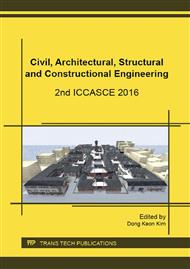p.208
p.214
p.219
p.227
p.234
p.241
p.249
p.255
p.262
Evaluating the Performance of Eaves to Promote Energy Efficiency of Traditional Dwellings in Suzhou
Abstract:
A shading roof can be an effective strategy to decrease the air-conditioning energy consumption as well as to improve the thermal environment inside a house in the place that is hot in summer and cold in winter. In Suzhou, a city in such place, traditional dwellings were constructed with shading roof eaves that have different sizes, allowing them adaptive to local climate. These eaves are worthy of being studied and improved. This study presents a summary of the sizes of the shading roof eaves of traditional Suzhou dwellings. The southward eave that has the greatest effect on indoor thermal environment is taken as the object of the current study, and a traditional Suzhou dwelling is selected as our case for the current study. Several comparative models are built, in which, the southward length of the roof eave is increased by 0.2m, from 0m to 2m. The effects of the length on both heating and cooling energy consumption are simulated by using the software Energyplus. As shown in the quantitative analysis of the simulation results, the structure is energy-efficient when the length is less than 0.6m, and the annual energy consumption reaches its minimum when the length is 0.4m.
Info:
Periodical:
Pages:
234-240
Citation:
Online since:
November 2016
Authors:
Keywords:
Price:
Сopyright:
© 2017 Trans Tech Publications Ltd. All Rights Reserved
Share:
Citation:


